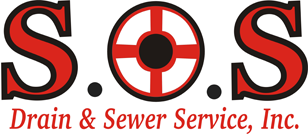Tree roots are a common yet often overlooked threat to sewer lines, leading to significant plumbing issues for homeowners and municipalities. As roots naturally seek out moisture and nutrients, they can infiltrate sewer lines through small cracks and joints, causing blockages and structural damage.
Understanding how tree roots affect sewer lines is crucial in preventing costly repairs and ensuring the longevity of our sewage infrastructure.
This document will explore the mechanisms of root invasion, the signs and consequences of root-related damage, and effective preventive measures and solutions. By gaining insight into this issue, property owners and city planners can take proactive steps to protect their sewer systems from root intrusion.
What are Sewer Lines?
Sewer lines are an essential component of our plumbing infrastructure, responsible for carrying and disposing of wastewater from buildings to designated treatment facilities. These underground pipes are typically made of various materials such as clay, concrete, or plastic and can range in size depending on the building’s needs.
Sewer lines are a vital part of our daily lives, providing us with clean water for cooking, bathing, and other household activities. However, when tree roots invade these pipelines, they can cause significant disruptions and damage to the system. It is crucial to understand how roots interact with sewer lines to prevent potential issues and maintain the proper functioning of our sewage systems.
Types of Sewer Lines
Before delving into how tree roots affect sewer lines, it is essential to understand the different types of pipes used in sewage systems. The most common types of sewer lines include:
- Residential – These sewer lines are typically smaller in diameter and connect individual homes to the main municipal sewage system.
- Commercial – Commercial sewer lines are larger in size and carry wastewater from multiple buildings, such as apartment complexes or office buildings.
- Municipal – Municipal sewer lines are the largest pipes used in sewage systems, responsible for transporting vast amounts of wastewater from different parts of a city to treatment facilities.
These various types of sewer lines can all be affected by tree root intrusion, leading to clogs and damage that can impact both residential and commercial properties and the overall sewage infrastructure.
What are the Signs of Tree Root Infiltration
Signs of tree root infiltration in sewer lines can vary depending on the severity and location of the issue. However, some common signs to look out for include slow or gurgling drains, foul odors coming from drains or toilets, and multiple clogged drains throughout a property. In severe cases, you may even notice sewage backups in sinks, tubs, or toilets.
Other indicators of tree root intrusion can be seen above ground. For example, if there is a significant tree with roots near your sewer line, you may notice indentations or depressions in the ground above the pipes. You may also see changes in vegetation growth patterns near the affected area as roots absorb excess moisture from leaking sewage.
If you notice any of these signs, it is crucial to address the issue promptly to prevent further damage and potential health hazards.
How Tree Roots Affect Sewer Lines
Tree roots affect sewer lines through a process known as root intrusion. As trees grow, their roots naturally seek out sources of water and nutrients in the soil, which can often lead them to underground pipes.
Once tree roots come into contact with a sewer line, they can infiltrate small cracks or joints in the pipe and begin to grow and expand inside the pipeline. This growth can eventually cause blockages or even breakage of the pipes, leading to costly repairs and potential health hazards.
One of the main reasons why tree roots affect sewer lines is due to the moisture present within these pipelines. Sewer lines are designed to carry wastewater, which contains high levels of moisture that can attract tree roots seeking a water source. As roots grow and expand within the pipes, they can create blockages that prevent proper wastewater flow, leading to backups and potential sewage overflows.
Another way tree roots affect sewer lines is through physical damage to the pipes. As roots continue to grow inside the pipeline, they can exert pressure on the pipe walls, causing cracks or breaks. This structural damage not only impacts the individual property but also affects the entire sewage system by reducing its capacity and potentially causing widespread issues for an entire city.
Furthermore, tree root intrusion can also lead to corrosion of sewer lines. The moisture from leaking sewage can erode pipes made of certain materials such as metal or clay, making them more susceptible to breakage and root intrusion. This corrosion can also weaken the pipes, making them more prone to collapse under pressure from tree roots and other factors.
Consequences of Tree Root Invasion
The consequences of tree root invasion in sewer lines can be severe and costly for both property owners and municipalities. Some potential consequences include:
- Blocked pipes – As roots grow within the pipeline, they can create blockages that prevent proper wastewater flow, leading to backups and potential sewage overflows.
- Structural damage – Tree roots can exert pressure on sewer line walls, causing cracks or breaks that impact the structural integrity of the system. This damage can also affect other underground utilities or even nearby buildings.
- Health hazards – Sewage backups caused by tree root intrusion can pose health risks to inhabitants of affected properties and surrounding areas due to exposure to harmful bacteria and pathogens.
- Financial costs – Repairing and replacing damaged sewer lines can be a costly and time-consuming process, especially for municipalities responsible for maintaining large-scale sewage systems.
These consequences highlight the importance of preventing and addressing tree root intrusion in sewer lines promptly.
Preventive Measures
To prevent tree root intrusion in sewer lines, it is crucial to understand the factors that contribute to this issue. Some preventive measures include:
- Regular maintenance – Regularly inspecting and maintaining sewer lines can help identify potential issues before they become major problems.
- Proper planting – When planting trees or shrubs near sewer lines, consider their expected growth and avoid planting directly above or too close to the pipes.
- Chemical treatments – Chemicals such as copper sulfate can be used to inhibit root growth within sewer lines. However, these treatments must be used carefully and according to instructions to avoid harming the environment or damaging the pipes.
- Pipe replacement – If your sewer lines are old or made of materials prone to root intrusion, consider replacing them with more modern and durable options.
- Hydro jetting – This method uses high-pressure water to clear out any tree roots present inside a sewer line. Regular hydro jetting can also help prevent future root intrusions by keeping the pipes clean and clear.
- Root barriers – Installing physical barriers around sewer lines can prevent tree roots from coming into contact with the pipes.
By implementing these preventive measures, property owners and municipalities can reduce the likelihood of tree root infiltration in their sewer lines and avoid the costly consequences that come with it.
Why Trees are Still Beneficial
Although tree root intrusion in sewer lines can cause significant issues, it’s essential to remember that trees still provide numerous benefits to our environment and communities. Some of these benefits include:
- Environmental impact – Trees help improve air quality by absorbing pollutants and greenhouse gases, reducing erosion and water runoff, and providing shade and cooling for urban areas.
- Economic value – Trees can increase the value of a property by up to 20%, enhance the overall aesthetic of a neighborhood, and attract wildlife.
- Social impact – Trees provide psychological benefits such as stress reduction, improved mental health, and increased community engagement.
Therefore, while it is crucial to take measures to prevent tree root intrusion in sewer lines, it’s also essential to continue promoting the benefits of trees and finding ways to coexist with them.
Future Trends for Sewer Line Maintenance
As technology advances, there will likely be more efficient and cost-effective methods for preventing and addressing tree root intrusion in sewer lines. Some potential future trends include:
- Robotic inspections – Drones or robots equipped with cameras and sensors can inspect sewer lines without the need for manual labor, reducing costs and increasing accuracy.
- Biodegradable root barriers – Biodegradable materials can be used as root barriers to prevent tree roots from infiltrating pipes while also being environmentally friendly.
- Smart monitoring systems – Advanced monitoring systems that use sensors and analytics can detect issues in sewer lines, such as tree root infiltration, before they cause significant problems.
These advancements can help municipalities and property owners better manage and maintain their sewer systems, reducing the impact of tree root intrusion and other issues.
Choose S.O.S. Drain & Sewer For Your Residential and Commercial Drain Cleaning Needs
From clogged toilets to tree roots in sewer lines, S.O.S. Drain & Sewer is the trusted name for all your drain cleaning needs. With over 75 years of experience serving the Minneapolis and St. Paul area, we have become experts in providing high-quality, efficient, and affordable services.
We understand the importance of having a functioning drainage system for both residential and commercial properties. That’s why we offer a wide range of services to address any issue you may be experiencing with your drains or sewers.
Our services include roof drain cleaning, interceptor cleaning, garage floor drain cleaning, storm drain cleaning, and more. We also offer preventive maintenance programs to help keep your drains and sewers in top condition and avoid costly repairs.
At S.O.S Drain & Sewer Services, customer satisfaction is our top priority. That’s why we provide upfront pricing with no hidden fees for all our services. We want to be the company you trust for all your sewer and drain needs.
Contact us now to schedule a free estimate or on-site consultation. Our experienced and licensed technicians are available 24/7 to address any drain or sewer emergency you may have.
FAQs
How do tree roots cause damage to sewer pipes?
Tree roots seek out moisture and nutrients, which often leads them to grow towards and into sewer pipes. Once inside, they can cause significant tree root damage by blocking and breaking the pipes. This damage can lead to slow drains and backups in the main sewer line, requiring immediate attention.
What are effective methods to kill tree roots in a sewer pipe?
To kill tree roots in a sewer pipe, you can use root-killing chemicals that specifically target only the roots inside the pipes without harming the rest of the tree. These chemicals are flushed into the sewer line and are designed to kill roots over time, helping to clear the blockage and prevent further growth.
Can I remove tree roots from my sewer line without professional help?
Removing tree roots from a sewer line can be a challenging task. For small invasions, DIY methods like flushing copper sulfate or foaming root killers down the toilet may temporarily reduce root growth. However, for extensive tree root removal or to completely clear and repair the sewer pipes, professional help is usually necessary to ensure the job is done safely and effectively.
How can I avoid tree roots growing into my main sewer line?
To avoid tree roots growing into your main sewer line, consider planting trees away from sewer lines or choose tree species with less aggressive root systems. Additionally, installing physical barriers made of metal or wood underground can help deflect roots from growing into sewer pipes. Regular maintenance and inspections of sewer lines can also detect and stop tree roots before they cause significant damage.








